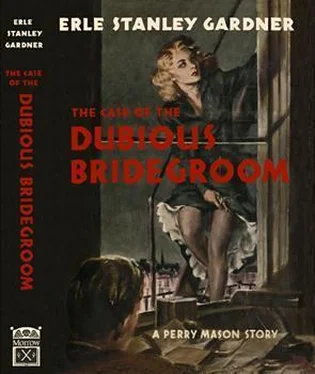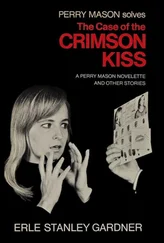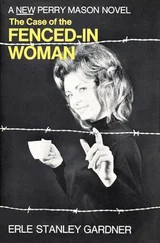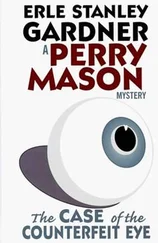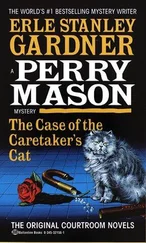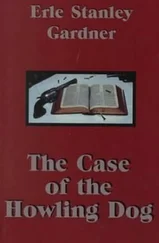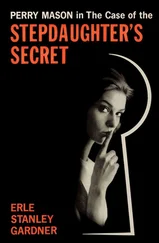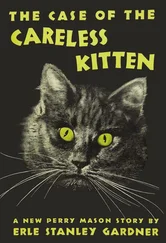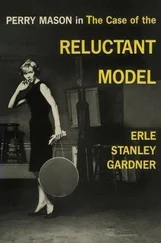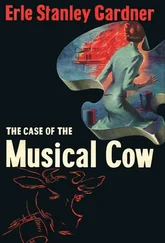“Very well,” Judge Minden said quickly, forestalling the angry reply which was quite evidently trembling on Covington’s lips, “the documents will be received in evidence. Proceed, Mr. District Attorney.”
And Covington proceeded. Slowly, remorselessly, he built up a wall of evidence.
Virginia Bynum testified to having left the gun on the fire escape. Livesey told of bringing it in, handing it to Garvin; of being instructed to put it in the glove compartment of Garvin’s car and of doing so.
George L. Denby told of the gun being brought in and handed to Garvin.
Mason seemed utterly detached, didn’t even bother to cross-examine either Virginia Bynum or Livesey. He did ask Denby on cross-examination, “How do you know it was the same gun?”
“It had the same number, sir.”
“Did you write the number down?”
“No, sir. I looked at it.”
“And remembered it?”
“Yes, sir, I have a photographic memory for numbers. I deal in them so much I get to remember them.”
“That’s all,” Mason snapped.
Covington grinned over at his assistant. “Dropped that one like a hot potato, didn’t lie?”
“I’ll say,” Jarvis gleefully agreed.
Covington went on with the building of a deadly wall of evidence. He showed that Edward Garvin and the woman whom he claimed as his second wife, Lorraine Evans, had stopped in the hotel at La Jolla. Calling the woman who ran the hotel, he showed their abrupt departure; showed that immediately after driving out for dinner they had returned, packed and hastily checked out, and at that time another person had been with them, a visitor who was also driving a convertible somewhat similar in size, color and appearance to Garvin’s automobile.
Covington built to his dramatic climax. “Do you,” he asked the woman who managed the hotel, “know the identity of that other person?”
Mason said quite casually, “Why you don’t need to waste time with that, Mr. District Attorney, I was the driver of that other car. I’m quite willing to admit it.”
Realizing that the testimony had been robbed of much of its dramatic value, Covington, nevertheless, managed to turn Mason’s admission to good account. “Exactly,” he said smiling, “and immediately after your visit, the defendant, and the person to whom he then claimed he was married, went dashing off to Mexico.”
“Do you,” Mason asked, “want to be sworn as a witness and state that as a fact?”
“No,” Covington said, smiling serenely at Mason. “I will prove it by a competent witness whom you may cross-examine, Mr. Mason. Call Señora Inocente Miguerinio.”
The fleshy, good-natured proprietor of the Vista de la Mesa Hotel rolled seductive hips as she walked to the stand, readily identified the defendant and the auburn-haired woman who was seated in the chair beside him; told how the pair had come to stay at her hotel on the night before the murder.
Covington looked at the clock so that he could explode his bombshell in time for the afternoon editions.
“Call Howard B. Scanlon.”
Howard Scanlon, a spare, rangy man in the early fifties, whose face with high cheekbones, long, determined mouth, and faded blue eyes, showed a singular lack of self-consciousness, came striding forward, held up his hand, and was sworn.
Covington glanced at the clock, then settled back in his chair.
Scanlon gave his name and address to the court reporter, then looked up to face Covington, awaiting the opening of his questioning.
Covington managed to make his manner elaborately casual. “What’s your occupation, Mr. Scanlon?”
“I’m a painter, sir.”
“Exactly. And on the night of September twenty-first, where were you?”
“I was in Tijuana, staying at the Hotel Vista de la Mesa.”
“Anything in particular that fixes that time in your mind, Mr. Scanlon?”
“Yes, sir.”
“What?”
“I’d been looking for the right kind of a job. My wife was in Portland, Oregon. That’s where I’d been before I came to Southern California, and I made up my mind that if I could get the kind of a job...”
“Now just a moment,” Covington interrupted with fatherly benevolence, “don’t tell us what you thought, don’t tell us anything about your own business problems, Mr. Scanlon, just try and answer the question. Is there anything that fixes the night of the twenty-first day of September in your mind?”
“Yes, sir.”
“Now just what is it? Just tell us just what fixes that date in your mind.”
“Well, I tried to telephone my wife to get her to come down here.”
“I see. Now, where was your wife?”
“In Portland, Oregon.”
“And you were trying to place a telephone call to her?”
“Yes.”
“At what time?”
“Well, I’d been calling her all during the evening, but she hadn’t been home. She was out with friends at a movie and...”
“Now just don’t testify to anything that you don’t know. Nothing that your wife may have told you later, Mr. Scanlon, just what you did. Now you have stated that the date is fixed in your mind because you were trying to telephone your wife.”
“Yes, sir.”
“Did you talk with your wife?”
“Yes, sir.”
“What time?”
“That was at about ten minutes past ten when my call came through.”
“Now did you notice the time?”
“Yes, sir.”
“Now while you were waiting for that call to come through, immediately prior to ten-ten, where were you?”
“I was in the telephone booth.”
“Where?”
“At this hotel, the Vista de la Mesa, in Tijuana.”
“There’s more than one booth there?”
“Yes, there is.”
“Now how long did you wait before your party came on the line?”
“About five minutes, I think.”
“And during the time you were waiting there, did someone have occasion to enter the other telephone booth?”
“Yes, sir.”
“Where?”
“There in the hotel in Tijuana.”
“At what time?”
“Just before ten-ten. I’d guess about ten-five, something like that.”
“You know that it was before ten-ten?”
“Yes, sir, because my call came through at ten-ten.”
“And how long was it before your call came through that someone entered the other booth?”
“Not over five minutes.”
“Now did you see this person?”
“Not then. I did later.”
“How much later?”
“About two or three minutes later when he left the booth.”
“You did see him then?”
“When he was leaving the booth, yes, sir.”
“Who was he, if you know?”
The witness raised a pointing forefinger. “That man sitting there.”
“You are pointing at Edward Charles Garvin, the defendant in this action?”
“Yes, sir, that man sitting right beside Mr. Mason, the lawyer.”
“And you saw this man Garvin emerging from the adjoining booth?”
“Yes, sir.”
“And what did he do while lie was in there, if you know?”
“He put through a long-distance call.”
“How do you know?”
“I could hear him.”
“You could hear his voice coming through the partition from the other booth?”
“That’s right. I was sitting there right next to the partition and...”
“And what did he say?”
“I heard him say that he wanted to place a long-distance call. I remember he said he wanted to talk with Ethel Garvin at the Monolith Apartments in Los Angeles, and then a moment later I heard him put in money, and then start talking, and he said: ‘Ethel, this is Edward. There’s no use our throwing a lot of money away on lawyers. I’m down in Tijuana now and you can’t touch me here. I’m going to drive up to Oceanside. Suppose you jump in your car and drive down there and meet me. We’ll talk things over, and work out something that’ll be satisfactory.’ And then he was silent for a while and then he said: ‘Now don’t be like that. I’m not a fool. I wouldn’t be calling you unless I had plenty on you. Remember that man you were playing around with in Nevada? Well I know all about him. I know where he is right this minute.’ And then he went on to tell her where this man was and how to get to his ranch. I’ve forgotten just what the directions were, but it was some place out of Oceanside.”
Читать дальше
